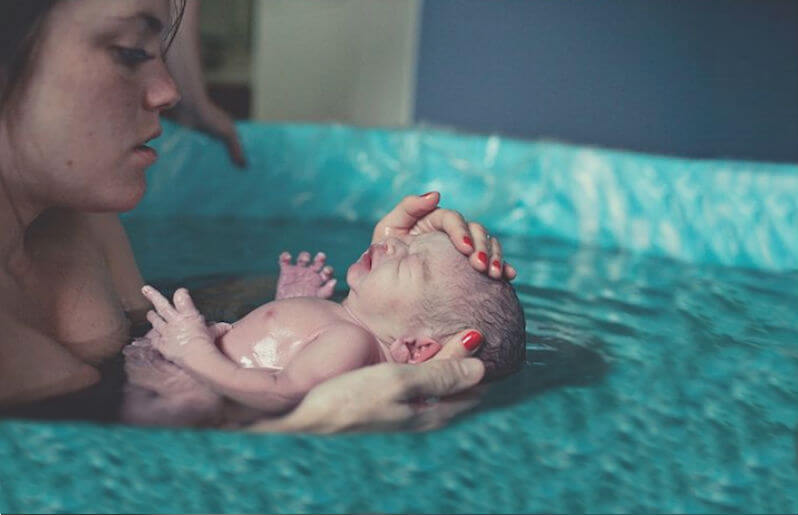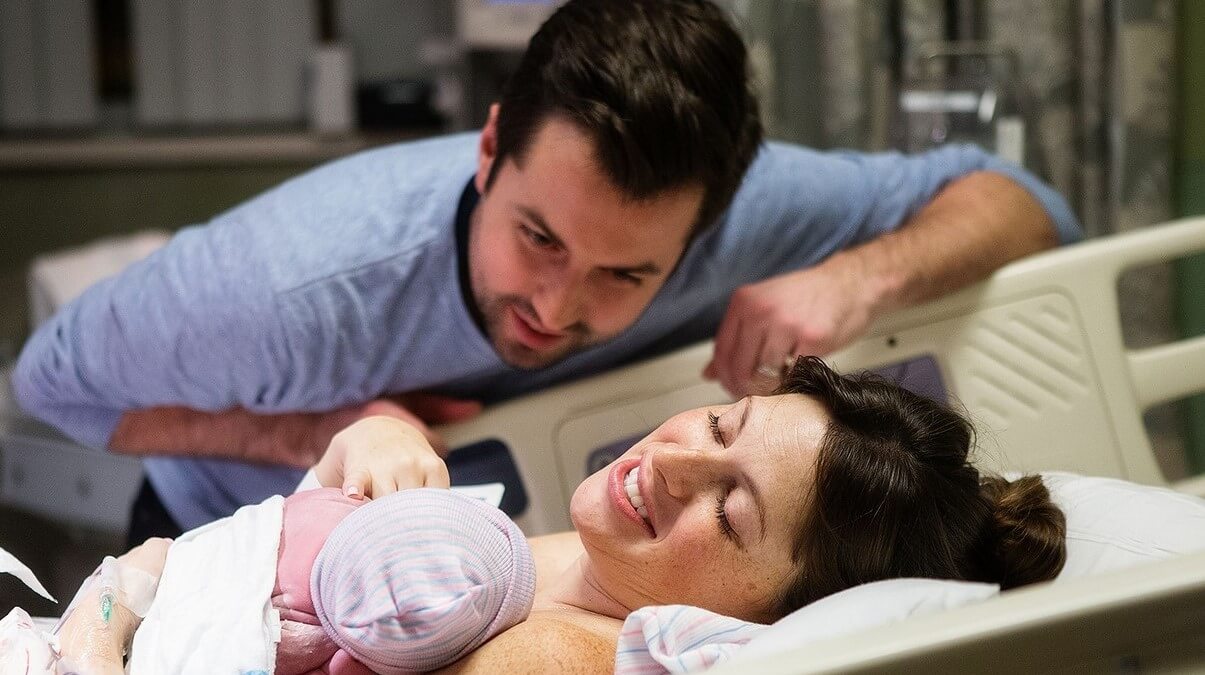Are you familiar with the 9 different types of childbirth?

Childbirth is a very special moment in any women’s life. That’s why it’s very important that women have all the information they need about the different birthing options that exist. Only then will they be able to decide which is best for them.
9 types of childbirth
Natural childbirth:
Natural childbirth refers to a vaginal birth. However, it is different from “normal” childbirth because it takes place without the use of anestesia and pain killers. Artificial oxitocyn is not used to stimulate contractions, nor do the doctors perform such procedures as eposiotomy.
This method is focused on the mother, respecting her needs and choices. Therefore, it is considered more humane. With natural childbirth, the mother can choose where she wants to have her baby, be it in a hospital or in her home.
Normal childbirth:
This is known as vaginal childbirth, as the baby is born through the birth canal (vagina). It is brought on spontaneously, and the baby is born with cephalic presentation. In other words, the baby’s head is located in the mother’s pelvis in order to prepare for birth.
In some cases, complications may occur that make it difficult for the baby to come out. When this happens during normal childbirth, an episiotomy is performed. An episiotomy is a surgical incision made in the perineum, the muscular region located between the vagina and the anus.
The benefits of vaginal child birth are numerous. As for the baby, normal childbirth guarantees that the lungs are sufficiently mature. It also means that the baby will have immediate contact with the mother during the first moments of life.
This gives the baby the early opportunity to be breastfed, and also reduces the possibility of respiratory disease and other diseases. As for the mother, vaginal child birth reduces the risk of hemorrhage. It also implies a shorter postpartum recovery and sooner contact with the baby.
Below are several more types of vaginal birth
Water birth:

Water birth takes place when the mother is submerged in a bath tub or pool during labor. The mother’s belly should be completely under water. During water birth, the father can also enter the bath tub or pool to accompany and support the mother in the important and intimate moment.
The mother is placed in a tub or pool of warm water for delivery. In general, the mother gets into the water once her cervical dilation has reached more than 5cm. She should also already be experiencing frequent intense contractions – more than 2 contractions every 10 minutes.
Squatting birth:
This birthing option is similar to natural childbirth, except for the mother’s position. Instead of lying down in the normal gynecological position, the mother squats down. Squatting births tend to be very fast.
Since the mother is in a vertical position, the laws of gravity speed up the birthing process. This position is usually more comfortable than the gynecological position.
Birth with forceps:
Forceps are used during normal birth when the baby is having an especially difficult time coming out. Forceps are tong-like instruments that consist of two parts that curve at the ends to grasp the baby’s head.
In order to insert the forceps and reposition the baby’s head, doctors must first perform an eposiotomy in the perineum. With the forceps in place, the medical professional will push when the mother feels the urge to push during a contraction.
Leboyer delivery:
Also known as birth without violence, this type of delivery is aimed at avoiding stress for the baby. French obstetrician Frederick Leboyer, developed these techniques in order to reduce trauma as much as possible during the baby’s first experience outside of the uterus.
The idea is for the delivery to occur in a calm environment that is as similar to the mother’s womb as possible. This means low lighting, silence, and a warm temperature. These factors mitigate the impact of the drastic differences between the intrauterine world and the world outside his mother’s womb.
Cesarean section:
Unlike the previously mentioned birthing option, in a c-section birth, babies are delivered through an incision in the mother’s abdomen rather than through the vagina. The incision cuts through several layers in order to reach the fetus inside the uterus and take him out through the same incision. Once the baby is removed, the placenta is also taken out.
Since c-section births involve surgery on the mother, postpartum recovery takes longer than with vaginal birth.
Assisted home birth:

More and more women are choosing to deliver their children at home. It’s nothing to be afraid of. In fact, women end up feeling safer and more free in their own homes. This birthing method is painful, but the women are prepared for this suffering and consider it part of the process. There are many resources available to relieve the pain, including a warm water bath, noesiology, massage, etc.
This method is characterized as being long, as it may last from 12 to 16 hours. It is the midwife’s mission to accompany the mother in labor every step of the way, holding her hands, helping her find the most comfortable position for each moment, providing massages, etc.
Humanized childbirth:
Humanized childbirth refers to an attitude rather than a method. The woman is the protagonist in the birth of her child. Her decisions are respected and discussed with the professionals and medicine is used based on scientific evidence.
In short, in humanized childbirth, delivering a baby is treated as a normal physiological process that very seldom actually requires intervention.
This text is provided for informational purposes only and does not replace consultation with a professional. If in doubt, consult your specialist.







